Substance use disorders, particularly those involving opioids and alcohol, have a profound impact—not only on individuals struggling with addiction but also on their families, communities, and healthcare systems. While recovery can feel like an uphill battle, Medication-Assisted Treatment (MAT) has become an effective and scientifically backed approach to help people reclaim their lives.
This blog will explore what MAT is, how it works, and why it’s increasingly seen as a critical component of recovery for opioid and alcohol use disorders. If you or someone you love is navigating the path to sobriety, this could be the guide you need to understand the life-changing role MAT could play.
What is Medication-Assisted Treatment (MAT)?
Medication-assisted treatment (MAT) combines FDA-approved medications with counseling and behavioral therapies to create a holistic approach to treating opioid and alcohol use disorders. Rather than focusing solely on withdrawal or detox processes, MAT addresses the physical, psychological, and emotional challenges of addiction. The medications involved often work by reducing cravings, normalizing brain chemistry, and alleviating withdrawal symptoms, which create the foundation needed for recovery.
Key Medications Used in MAT
- For Opioid Use Disorder (OUD):
-
- Methadone – A long-acting opioid that reduces withdrawal symptoms and helps stabilize brain chemistry without the euphoria.
- Buprenorphine (Subutex, Suboxone) – Reduces cravings, blocks withdrawal symptoms, and prevents misuse.
- Naltrexone (Vivitrol) – Blocks the euphoric and sedative effects of opioids, helping to deter relapse.
- For Alcohol Use Disorder (AUD):
-
- Naltrexone – Alters the brain’s response to alcohol, minimizing the reinforcing rewards that drive alcohol use.
- Acamprosate (Campral) – Restores brain balance to prevent cravings.
- Disulfiram (Antabuse) – Causes unpleasant reactions to alcohol, acting as a deterrent.
MAT medications are carefully prescribed and monitored by healthcare professionals to suit individual needs, making this a highly personalized form of treatment.
Why is MAT Essential in Recovery?
Recovery from addiction involves more than just the physical act of stopping drug or alcohol use; it is about restoring quality of life. MAT serves as a bridge, enabling people to move from dependence to stability while rebuilding their mental and emotional well-being. Here’s why MAT plays a vital role in recovery:
1. Reduces Risk of Overdose
Opioid overdoses are a significant concern during recovery due to potential relapse. MAT medications, such as methadone and buprenorphine, help stabilize the body and reduce the likelihood of life-threatening overdoses by curbing cravings and preventing misuse.
2. Improves Retention in Treatment
People who use MAT are more likely to stay engaged in their recovery programs compared to those undergoing non-medicated treatment. This longer engagement allows for consistent emotional and behavioral support, which is key to long-term success.
3. Addresses Biological Components of Addiction
Opioid and alcohol use physically alter brain chemistry, making it incredibly challenging for individuals to manage their behavior or cravings. MAT works by targeting these biological changes directly and providing relief from withdrawal symptoms and cravings.
4. Supports Holistic Recovery
Unlike detox-only approaches, MAT combines medication with counseling and therapy for physical and emotional healing. Behavioral therapies provide individuals with coping skills and strategies that address the root of addiction, while MAT stabilizes them physically.
Who Can Benefit from MAT?
MAT can help a wide range of individuals, provided the approach is guided by healthcare professionals. This includes people with long-term substance use disorders, those struggling with relapse after traditional rehab, and individuals looking to improve their quality of life while pursuing sobriety.
The stigma surrounding MAT often implies it’s a “substitute drug” approach, but this couldn’t be further from the truth. MAT does not replace one addiction with another; instead, it is a tightly regulated, evidence-based method of supporting recovery. Healthcare providers work with patients to establish clear goals and taper medications as the individual progresses through their recovery.
Common Misconceptions About MAT
Despite being endorsed by organizations like the National Institute on Drug Abuse (NIDA) and the Substance Abuse and Mental Health Services Administration (SAMHSA), MAT is sometimes misunderstood. Here are some common misconceptions and the facts behind them:
- Misconception: MAT is a “crutch” or “quick fix.”
-
- Fact: MAT is a long-term treatment combining medication with behavioral therapy to address deep-rooted causes of addiction.
- Misconception: MAT prevents real recovery.
-
- Fact: By reducing cravings and withdrawal symptoms, MAT enables individuals to fully engage with counseling, job training, and community building, laying the groundwork for complete recovery.
Take the Next Step Toward Recovery
Medication-assisted treatment is not a one-size-fits-all solution—but for many, it’s a critical lifeline on the path to recovery. Whether you or someone you love is starting the recovery process or has been struggling to maintain sobriety, MAT offers both hope and a proven set of tools that make sobriety achievable and sustainable.
If you’d like to explore whether MAT is right for you, reach out to limit to 750 words
Include in the conclusion to reach out to Arrowood Addiction Treatment center. Our compassionate team of experts will work with you to create a tailored plan that suits your needs, empowering you to take that first step toward recovery. Contact us today and regain control of your life.

